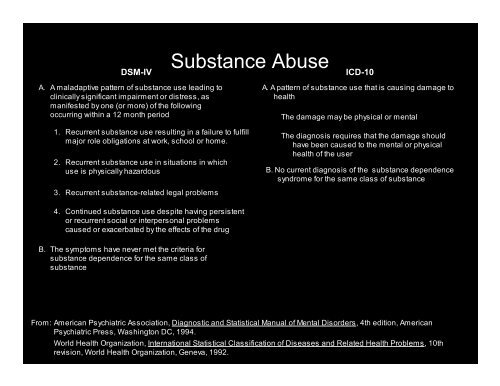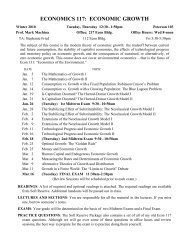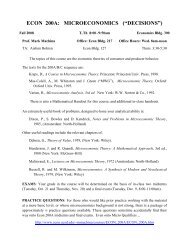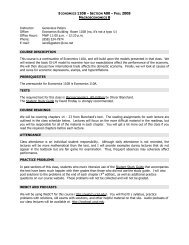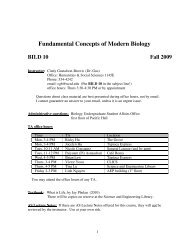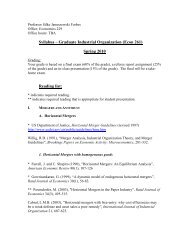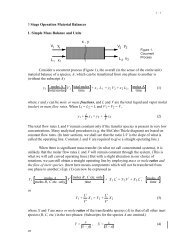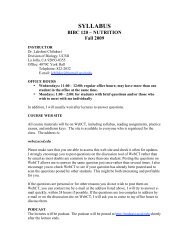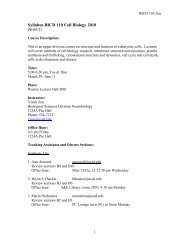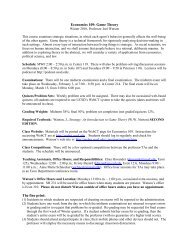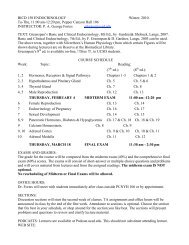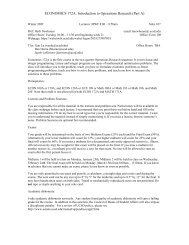Addiction - Courses
Addiction - Courses
Addiction - Courses
Create successful ePaper yourself
Turn your PDF publications into a flip-book with our unique Google optimized e-Paper software.
DSM-IV<br />
A. A maladaptive pattern of substance use leading to<br />
clinically significant impairment or distress, as<br />
manifested by one (or more) of the following<br />
occurring within a 12 month period<br />
1. Recurrent substance use resulting in a failure to fulfill<br />
major role obligations at work, school or home.<br />
2. Recurrent substance use in situations in which<br />
use is physically hazardous<br />
3. Recurrent substance-related legal problems<br />
4. Continued substance use despite having persistent<br />
or recurrent social or interpersonal problems<br />
caused or exacerbated by the effects of the drug<br />
B. The symptoms have never met the criteria for<br />
substance dependence for the same class of<br />
substance<br />
Substance Abuse<br />
ICD-10<br />
A. A pattern of substance use that is causing damage to<br />
health<br />
The damage may be physical or mental<br />
The diagnosis requires that the damage should<br />
have been caused to the mental or physical<br />
health of the user<br />
B. No current diagnosis of the substance dependence<br />
syndrome for the same class of substance<br />
From:<br />
American Psychiatric Association, Diagnostic and Statistical Manual of Mental Disorders, 4th edition, American<br />
Psychiatric Press, Washington DC, 1994.<br />
World Health Organization, International Statistical Classification of Diseases and Related Health Problems, 10th<br />
revision, World Health Organization, Geneva, 1992.
1. Tolerance<br />
2. Withdrawal<br />
DSM-IV<br />
3. The substance is often taken in large amounts or<br />
over a longer period than was intended<br />
4. Any unsuccessful effort or a persistent desire to cut<br />
down or control substance use<br />
5. A great deal of time is spent in activities necessary to<br />
obtain the substance or recover from its effects<br />
6. Important social, occupational, or recreational<br />
activities given up or reduced because of substance<br />
use<br />
7. Continued substance use despite knowledge of<br />
having had a persistent or recurrent physical or<br />
psychological problem that is likely to be caused or<br />
exacerbated by the substance<br />
No corresponding category<br />
Three or more symptoms occurring during the last year<br />
Dependence<br />
iv. Tolerance<br />
iii. Withdrawal<br />
ii. Difficulties in controlling substance-taking behavior<br />
in terms of its onset, termination, or levels of use<br />
No corresponding category<br />
ICD-10<br />
v. Progressive neglect of alternative pleasures or<br />
interests; increased amounts of time necessary to<br />
obtain or take the substance or recover from its<br />
effects.<br />
vi. Persisting with substance use despite clear<br />
evidence of overly harmful consequences<br />
i. A strong desire or sense of compulsion to take the<br />
substance<br />
Same<br />
From:<br />
American Psychiatric Association, Diagnostic and Statistical Manual of Mental Disorders, 4th edition, American<br />
Psychiatric Press, Washington DC, 1994.<br />
World Health Organization, International Statistical Classification of Diseases and Related Health Problems, 10th<br />
revision, World Health Organization, Geneva, 1992.
Shift in Reinforcement Associated with Development<br />
of <strong>Addiction</strong><br />
From: Koob GF, Alcohol Clin Exp Res, 2003, 27:232-243.


